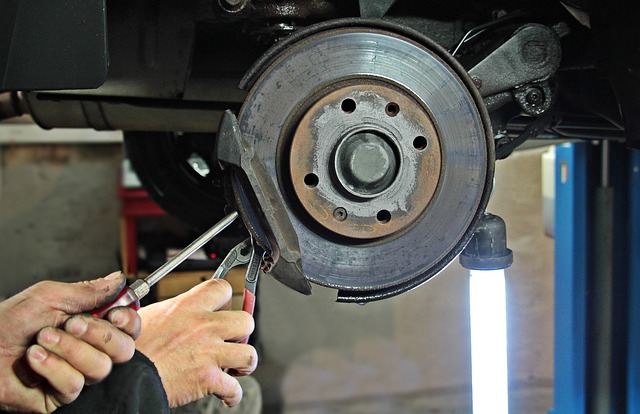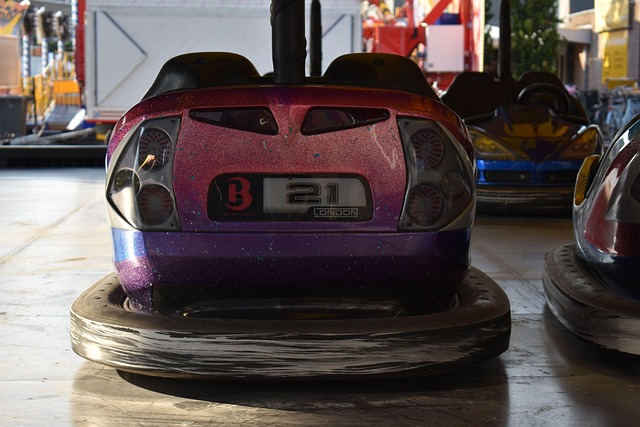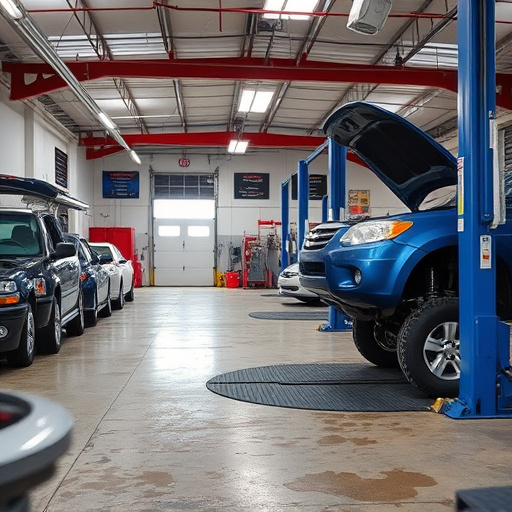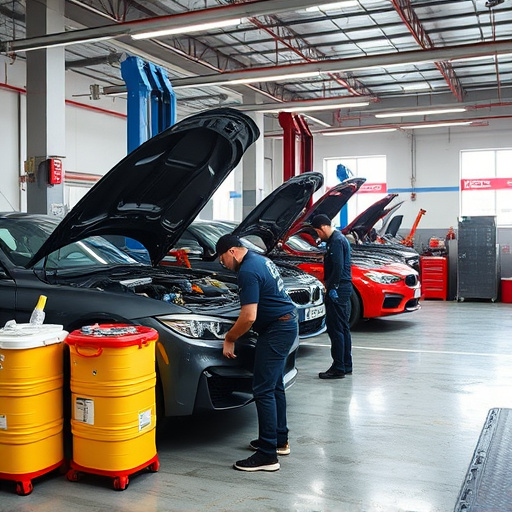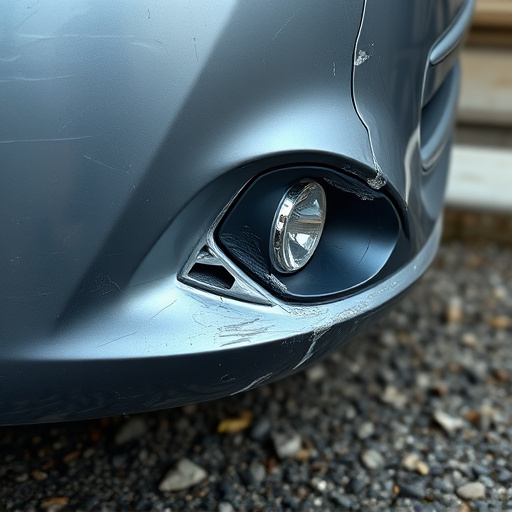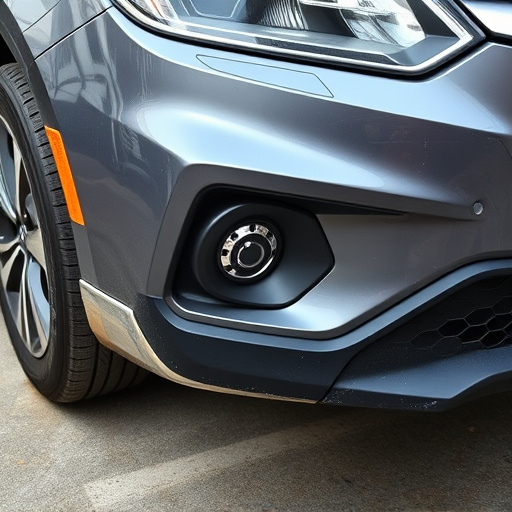Category: Tesla battery protection repair
Tesla Battery Protection Repair: Unlocking Sustainable Energy Solutions
Introduction
In an era defined by the quest for sustainable energy, the role of electric vehicles (EVs) has become increasingly pivotal. At the heart of this revolution lies Tesla, a pioneer in battery technology, known for its advanced lithium-ion batteries that power their iconic vehicles. However, as with any complex system, these batteries require meticulous care and repair to ensure optimal performance and longevity. This article delves into the intricate world of Tesla Battery Protection Repair, exploring its purpose, evolution, global impact, technological innovations, regulatory landscape, and future potential. By the end, readers will grasp the significance of this field in shaping a more sustainable energy future.
Understanding Tesla Battery Protection Repair
Definition and Core Components
Tesla Battery Protection Repair refers to the specialized process of maintaining, diagnosing, and repairing lithium-ion batteries used in Tesla vehicles. These batteries are sophisticated power sources that store and deliver electrical energy efficiently, enabling the smooth operation of electric cars. The core components include:
- Battery Cells: The fundamental units of the battery pack, typically made from lithium, iron, and phosphorus, arranged in a precise configuration to manage voltage and capacity.
- Battery Management System (BMS): An electronic system that monitors and controls each cell’s performance, ensuring safe and efficient operation by balancing voltage and current across cells.
- Protective Circuits: These safeguard the battery from overcharging, over-discharging, short circuits, and thermal runaway, potential hazards that can compromise the battery’s health and safety.
- Cooling Systems: Effective cooling mechanisms are vital to regulate temperature, as high temperatures can accelerate degradation and reduce battery life.
Historical Context and Significance
Tesla’s journey in battery protection repair traces back to its early days when it identified the need for advanced battery management systems. As Tesla vehicles gained popularity, the company recognized the critical role of battery health in ensuring customer satisfaction and vehicle longevity. This led to significant investments in research and development, ultimately resulting in breakthroughs that improved battery safety, performance, and lifespan.
The significance of this repair practice lies in several key areas:
- Safety: Lithium-ion batteries, despite their advantages, can pose risks if not handled correctly. Adequate protection mechanisms prevent accidents related to thermal runaway or electrical faults.
- Performance Optimization: Regular maintenance ensures the battery operates at its best, maximizing energy efficiency and vehicle range.
- Longevity: Proper care extends the lifespan of the battery, which is a significant investment for EV owners.
- Sustainability: By promoting longer-lasting batteries, this practice contributes to a circular economy, reducing electronic waste.
Global Impact and Trends
International Influence
The global impact of Tesla Battery Protection Repair is profound, as the company’s dominance in the EV market has inspired both competition and collaboration worldwide. Countries with growing electric vehicle adoption rates are investing heavily in battery technology research and repair infrastructure:
- China: As the world’s largest producer and consumer of EVs, China is home to numerous Tesla service centers and a thriving industry for battery recycling and replacement.
- Europe: With ambitious EV targets, countries like Germany and the UK have established advanced battery testing and repair facilities, fostering innovation and standards development.
- North America: The US and Canada are witnessing an expansion of Tesla’s service network, along with emerging start-ups specializing in battery protection and recycling.
Key Trends Shaping the Landscape:
- Increasing Adoption of Electric Vehicles: Global sales figures indicate a rapid rise in EV popularity, driving the demand for reliable battery protection services.
- Battery Sharing and Recycling Programs: Some regions are implementing programs that encourage battery swapping and recycling, reducing waste and enhancing sustainability.
- Digitalization of Repair Services: The integration of technology, such as remote diagnostics and online booking systems, streamlines the repair process, improving customer experience.
- Focus on Environmental Sustainability: There is a growing emphasis on eco-friendly practices, from battery production to disposal, reflecting global environmental awareness.
Economic Considerations
Market Dynamics and Investment Patterns:
The Tesla Battery Protection Repair market operates within a complex economic ecosystem:
- Global Market Size: According to recent reports, the global EV battery repair market is projected to reach USD 12.5 billion by 2030, highlighting its substantial potential.
- Regional Disparities: Market growth varies across regions due to differences in EV penetration rates, government incentives, and local industrial capabilities.
- Investment Opportunities: The sector attracts investments from both traditional automotive companies and tech giants seeking a slice of the EV revolution.
Role in Economic Systems:
- Job Creation: This industry contributes to employment generation, including skilled technicians, engineers, and support staff.
- Supply Chain Impact: Repair services influence the demand for raw materials, battery components, and advanced technologies used in their manufacturing.
- Cost Savings: Effective repair practices can reduce the overall cost of EV ownership by minimizing battery replacement expenses.
Technological Advancements
Innovations Shaping the Field:
The realm of Tesla Battery Protection Repair has witnessed several groundbreaking technological advancements:
| Technology | Description | Impact | Future Potential |
|---|---|---|---|
| Advanced BMS (Battery Management Systems) | Enhanced control and monitoring capabilities, including real-time cell balancing and predictive analytics. | Improved battery performance and longer lifespan. | Integration with AI for autonomous diagnostics and repair predictions. |
| Solid-State Batteries | Transition from liquid electrolytes to solid conductors, offering higher energy density, faster charging, and improved safety. | Significantly enhanced vehicle range and reduced charging times. | Expected to revolutionize the industry, but mass production challenges remain. |
| Battery Recycling and Upcycling | Processes to recover valuable materials from used batteries, reducing waste and environmental impact. | Promotes sustainability and ensures a consistent supply of raw materials. | Advancements in recycling technologies will make it more efficient and cost-effective. |
| Digital Twin Technology | Creates virtual replicas of physical batteries, enabling remote monitoring, diagnostics, and predictive maintenance. | Enables proactive battery care, reducing unexpected failures. | Expanding use cases in various industries beyond EVs. |
Impact on Repair Practices:
- Improved Efficiency: Advanced technologies enable faster and more precise repairs, reducing downtime for EV owners.
- Predictive Maintenance: Some innovations allow for predictive diagnostics, enabling preventative measures to prolong battery life.
- Enhanced Safety: Newer batteries are designed with improved safety features, making repair processes safer.
Policy and Regulation
Governing Frameworks:
The regulatory landscape surrounding Tesla Battery Protection Repair is evolving as governments recognize its importance in the EV transition:
- Safety Standards: Organizations like SAE International establish guidelines for battery safety, performance, and testing to ensure vehicle and driver protection.
- Environmental Regulations: Many countries have implemented laws promoting recycling and sustainable disposal of batteries, aligning with global environmental agreements.
- Incentives and Subsidies: Governments offer incentives to encourage EV adoption, including tax breaks and subsidies for battery repair and replacement services.
Influence on Development:
- Standardization: Regulatory bodies play a crucial role in setting standards, ensuring compatibility and safety across different vehicle models and battery types.
- Innovation Support: Government funding and incentives stimulate research and development, driving technological advancements.
- Consumer Protection: Clear regulations protect consumers from unfair practices and ensure access to quality repair services.
Challenges and Criticisms
Overcoming Obstacles:
Despite its many benefits, the Tesla Battery Protection Repair sector faces several challenges:
- Skilled Workforce Shortage: The specialized nature of EV battery repairs requires a highly skilled workforce, which is in short supply globally.
- Rapid Technological Change: Keeping up with rapid advancements in battery technology can be challenging, necessitating continuous training for technicians.
- Cost Considerations: Repair costs may deter some EV owners, especially those in lower-income brackets, leading to potential safety risks if batteries are not maintained properly.
Proposed Solutions:
- Training Programs: Establishing comprehensive training initiatives can address the skilled labor shortage by educating and certifying technicians.
- Industry Collaboration: Partnering with educational institutions and industry leaders can facilitate knowledge sharing and foster innovation.
- Affordability Initiatives: Incentives and subsidies for repair services, along with accessible financing options, can make battery protection more affordable.
Case Studies: Successful Applications
Real-World Examples:
Case Study 1: Tesla’s Global Service Network
Tesla has pioneered a comprehensive global service network, ensuring customers have access to high-quality battery repair and maintenance. This strategy includes:
- Dedicated service centers in major cities worldwide, offering specialized training for technicians.
- Efficient inventory management to ensure quick access to replacement parts.
- Online booking systems and remote diagnostics, allowing customers to schedule appointments conveniently.
Case Study 2: Battery Recycling in Europe
Several European countries have implemented successful battery recycling programs, demonstrating a holistic approach to Tesla Battery Protection Repair:
- Germany’s Take-Back System: A mandatory take-back program ensures batteries are collected and recycled responsibly after vehicle disposal.
- Dutch Battery Recycling Initiative: The Netherlands’ innovative model involves collaborating with local authorities and retailers to collect used batteries for recycling, raising consumer awareness.
Case Study 3: Digital Twin Maintenance in Fleet Operations
A leading ride-sharing company adopted digital twin technology for its electric fleet, achieving remarkable results:
- Proactive Maintenance: By creating digital replicas of every battery, the company could predict performance issues and schedule maintenance remotely.
- Reduced Downtime: This approach significantly lowered vehicle off-road time, enhancing customer satisfaction and operational efficiency.
Future Prospects
Emerging Trends and Growth Areas:
The future of Tesla Battery Protection Repair is filled with promising possibilities:
- Autonomous Repair and Diagnostics: Advancements in AI and machine learning will enable autonomous battery diagnostics and repair, reducing labor costs and increasing accessibility.
- Personalized Battery Care: With data analytics, EV owners may receive customized maintenance plans based on their driving habits and battery performance.
- Decarbonization of Supply Chain: The industry will continue to focus on sustainable practices throughout the battery lifecycle, from production to disposal.
- Expansion into New Markets: As developing nations embrace EVs, repair services will need to adapt to diverse geographical and cultural contexts.
Strategic Considerations:
- Collaboration between Industries: Partnerships between automotive, tech, and energy sectors can drive innovation and address challenges more effectively.
- Investments in Research and Development: Continued R&D investment is crucial for staying ahead of technological advancements and market trends.
- Global Standardization: Harmonizing international standards can facilitate cross-border repair services and ensure consistent quality.
Conclusion
Tesla Battery Protection Repair is a dynamic field that plays a pivotal role in the sustainable energy transition. From its technical intricacies to global implications, this sector showcases the intricate interplay between technology, economy, and environmental sustainability. As the world navigates the challenges of EV adoption, effective battery protection repairs will be instrumental in ensuring customer satisfaction, optimizing vehicle performance, and fostering a greener future.
FAQ Section
Q: How often should I get my Tesla batteries checked?
A: Regular maintenance is recommended at least once a year or every 25% change in battery capacity to ensure optimal performance and longevity.
Q: Can Tesla batteries be repaired if they have reached their warranty expiration?
A: While some repairs may not be covered post-warranty, many issues can still be addressed, and third-party warranties can provide additional protection.
Q: Are there eco-friendly alternatives to conventional battery disposal methods?
A: Yes, recycling and upcycling are preferred methods for disposing of used batteries. These processes recover valuable materials, reducing environmental impact.
Q: Can AI truly predict battery failures accurately?
A: AI, combined with sensor data and historical trends, can provide predictive analytics, but human oversight remains crucial for accurate diagnostics and safety.
Q: How does the cost of battery repair compare to replacing the entire battery pack?
A: Repair costs vary, but in many cases, repairing a functional but degraded battery can be more economical than replacing it entirely, extending its lifespan.
Tesla Battery Protection Repair: Impact Damage Solutions
Expert Tips for Tesla Battery Protection Repair Choices
Tesla Battery Protection: Repair, Sustainability, and Impact
Repair Tesla Battery Protection with OEM Components

Tesla battery protection systems (BPS) are vital for safe vehicle operation, monitoring critical bat…….
Tesla Battery Protection Repair: What to Expect Today
Mastering Tesla Battery Protection Repair Options
Unveiling Tesla Battery Protection Repair Processes

The Tesla Battery Protection System (BPS) is a critical component that safeguards the battery pack f…….
Tesla Battery Protection Repair: Cool Your Car’s Heart
Protect Your Tesla Battery: Comprehensive Repair Guide

Tesla battery protection repair is vital for combating corrosion caused by moisture and extreme temp…….


